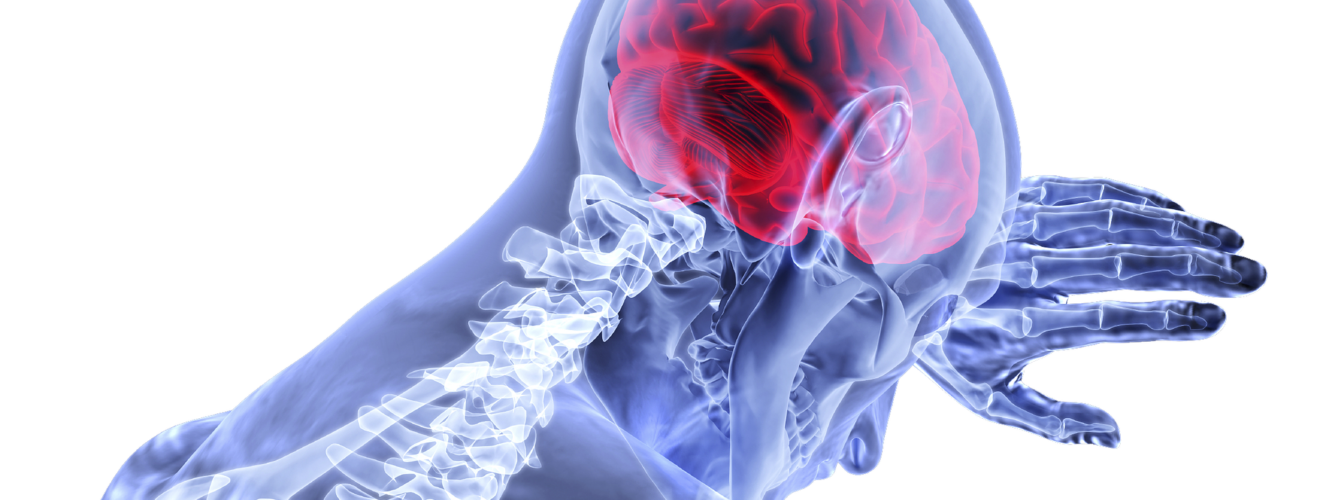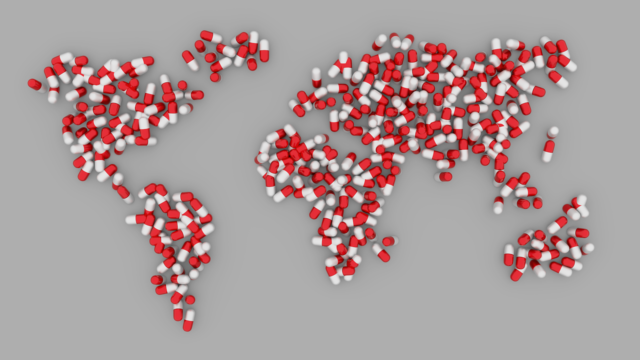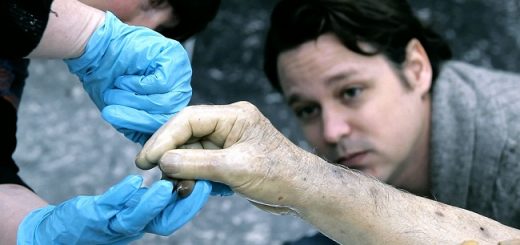The future of stroke: Is a new public health philosophy needed?

COVID-19 statement: Recent data from Public Health Scotland suggests that the number of people seeking help for a stroke has decreased by around 40% in recent weeks. A stroke is a medical emergency. Treatment is required immediately and if you suspect you or a member of your household is having a stroke then you must act FAST and dial 999.
Interestingly, brief editorial recently published in Clinical Neurology by medical doctors working in Piacenza, Italy offers possible explanations for the decrease in cases of ischaemic stroke during the COVID-19 pandemic. It is well worth a look for those keen to find out more.
May is National Stroke Awareness Month, a campaign aiming to highlight the devastating effects of stroke and the demanding recovery process of the individuals affected by it. With over 100,000 strokes occurring annually in the UK1, it is likely that we all know someone or at least know of someone who has suffered one. Perhaps, however, what many of us do not understand is just how far-reaching those effects are.
The risk of stroke increases as we get older, doubling every ten years after the age of 45 and in a globally ageing population, the challenges associated with managing this and other associated conditions are considerable. In 2017, the Scottish Health Survey2 reported that 2.8% of women and 3.2% of men in Scotland have experienced a stroke. In the same year, NHS Scotland’s Stroke Statistics report3 recorded a total of 3,935 deaths from the disease. These figures are stark, but what exactly is a stroke and how do you know you are having one?
Anatomy of a stroke
The American Stroke Association defines a stroke as occurring “…when a blood vessel that carries oxygen and nutrients to the brain is either blocked by a clot or bursts (or ruptures). When that happens, part of the brain cannot get the blood (and oxygen) it needs, so it and brain cells die”4.
Broadly, there are two main types of stroke; ischaemic and haemorrhagic. 85% of strokes are described as ischaemic. These occur when fatty deposits called plaques are deposited in the walls of arteries travelling to the head such as the carotid arteries. Over time, these can lead to the complete or partial occlusion of the vessel, preventing the necessary supply of blood and oxygen from reaching the brain. This build-up, known as atherosclerosis can occur in other vessels throughout the body, and if it develops in the heart then it can lead to a heart attack. For this reason, some clinicians call a stroke a ‘brain attack’ to draw parallels to its more widely publicised cardiovascular counterpart.
The remaining 15% of strokes are haemorrhagic and can be further divided into two main types; intracerebral and subarachnoid. The former occurs when a vessel within the brain bursts, causing blood travelling at high pressure to leak into the surrounding tissues leading to swelling. Alternatively, subarachnoid haemorrhages are characterised by the bursting of a vessel close to the surface of the brain, causing blood to pool within the brain’s protective membrane. There is evidence to suggest that subarachnoid strokes run in families5 and symptoms can include the sudden onset of a severe headache, stiff neck and vomiting. The symptoms of ischaemic stroke include sudden confusion and numbness or weakness on one side of the body which is also known as hemiplegia. However, the symptoms of each type of stroke vary greatly depending on the area of the brain affected.
Early Warning System
Sometimes, a stroke can last for just a few minutes and these are known as transient ischaemic attacks or TIAs. They can be thought of as ‘mini-strokes’ and are suggestive that a larger stroke may follow so they should be treated as a medical emergency6.
Know your risk factors
The risk factors associated with a stroke can be largely divided into two categories; modifiable and non-modifiable. We all are familiar with the modifiable ones – those within our control to change. Smoking, excessive alcohol consumption and drug use, lack of physical activity, being overweight, type 2 diabetes, high blood pressure and high blood cholesterol – alone or in combination, these all increase the likelihood of suffering from a stroke. Scotland is a country that has a particular pervasiveness for these risk factors. Interestingly, a study investigating the low life expectancies of Glasgow’s citizens known as the ‘Glasgow Effect’ discusses the health inequities prevalent in the city but also highlights the contribution of socio-economic and psycho-social deprivation and is well worth reading7.
An international study published in The Lancet in 2016, established that 10 of the modifiable risk factors, led to 9 in 10 of the strokes occurring globally8. However, there are so-called non-modifiable risk factors that we simply cannot control such as age, race, sex, family history and type 1 diabetes that put us at increased risk. There are many complex components which play a role in determining our risk such as our socioeconomic status, as seen in the Glasgow Effect9. Furthermore, there have been numerous studies exploring the ethnic disparities involved in stroke10 and many other preventable diseases such as atherosclerosis and diabetes. These speak to wider structural issues within our society, issues which put some of our most vulnerable members at risk.
The World Stroke Organization’s campaign #DontBeTheOne aimed to highlight that one in four us will have a stroke in our lifetime and in partnership with other medical organisations, developed an app called the Stroke Riskometer™. It is available on the App Store and GooglePlay and has been designed to give you an indication of your stroke risk based on several modifiable and non-modifiable factors. More importantly, it allows you to understand your own risk factors, offering the chance to reflect on the status of your health.
Symptoms of a larger problem?
Looking to the future, the modifiable risk factors of stroke and related illnesses do not look set to improve. Studies predict that by 2050, obesity will affect approximately 50% of females and 60% of males globally11. According to the World Health Organization (WHO), the number of people living with diabetes has quadrupled since 198012. By 2030, 578 million and by 2045, 700 million people worldwide are predicted to be living with the disease – a seven-fold increase over almost seventy years13. In 2016, it was estimated that 31% of all deaths worldwide were attributed to cardiovascular disease (CVD)14 and by 2030, CVD will be responsible for more than 23.6 million deaths globally.

The 2019 Revision of World Population Prospects, a comprehensive document compiled by the United Nations (UN), predicts that in the next thirty years, 1 in 6 of the global population will be over the age of 65 (1 in 4 in Europe)15. This is further reinforced by the WHO, with their estimates suggesting that by 2050, over 20% of the world’s population will be over the age of 6016 – that is double what it is currently. This can be attributed to several demographic drivers of population ageing such as decreasing fertility, increasing mortality rates and even the way we migrate, all altering the composition of our societies.
A sixteen-year study published in The Lancet in 2019 found that globally, the burden of stroke is set to continue rising as populations age. We will see an increase in the number of people living with chronic cardiovascular diseases, diabetes and stroke. However, as medical advances continue, these individuals will not only live much longer but they will potentially be facing many more of those years living with disabilities, many of which are preventable. Ignoring the vast economic implications, without significant changes to healthcare infrastructure across the globe to meet the changing demands of our ageing populations, we will continue to see increased pressures on health and medical services. This will ultimately culminate in a reduced level of care for those who need it most.
How many of us consider how our health will look in thirty or forty years? It can sometimes be a struggle to ensure we maintain our health and mental wellbeing at present, never mind in four decades. But could this also be part of a wider problem? Do we need to adopt a philosophy that is centred on preserving our health and the number of years we remain disease-free for longer? We are all regularly reminded of the benefits of a healthy lifestyle; limiting our alcohol consumption, not smoking, taking regular exercise and how they can help prevent heart attacks and strokes. Yet, by giving little consideration to their associated disabilities and how challenging it can be living with them, coupled with an ageing population with increasingly demanding needs, it is easy to see why we are heading towards a future where 2 in 3 of us will be living with varying degrees of functional impairment following a stroke17.
Road to recovery
As soon as 24 hours after having a stroke your doctor may encourage you to begin physiotherapy. This can be simply getting in and out of a chair, usually called sit-to-stand exercises or balancing while standing upright and stationary in cases where a mild stroke has occurred and the level of impairment is limited. However, the recovery process is lengthy for some and there may be multiple impairments that therapy needs to address. Communication is one such area and it can be affected in a myriad of ways depending on which area of the brain has been damaged.
Aphasia, of which there are three main types, can impede the ability to comprehend others18. Apraxia of speech affects the muscles in the face and throat and dysarthria, which is a common result of a stroke, can prevent the proper control of facial muscles. The ability to communicate is fundamental to our lives and being robbed of this ability can be traumatic. Speech and language therapy aims to restore the ability to communicate where possible and assists with the development of alternative methods of interaction such as through technology, drawing and gesturing.
Cognition can also be significantly affected following a stroke and is a problem comprised of many separate components from issues with concentration and the ability to not only focus on single tasks but when moving between tasks and processing information. This has an impact on memory, both short-term and long-term and can be particularly distressing. Problems can also arise with visual perception, spatial neglect, which is an impairment in the awareness of objects on one side of the body and apraxia (the inability to control movement)19.
Having spent several months volunteering in a stroke rehabilitation ward, another common problem experienced by stroke patients that I noticed had a significant effect on their mental wellbeing is difficulties in swallowing or dysphagia. This issue is so serious that within hours of being admitted to hospital, doctors will assess whether your ability to swallow has been affected to ensure that aspiration does not occur. This is when small amounts of food or drink enter the lungs rather than making its usual way to the stomach. Furthermore, it can lead to pneumonia or other harmful infections and as such, anyone struggling to swallow will be placed on a specialised diet, ranging from thickened, nutrient-rich liquids to soft foods until their diet can possibly return to normal20.
Planning ahead
Being robbed of your mobility and ability to communicate can lead to behavioural changes, low mood, depression and anxiety. Rehabilitation encompasses the entire recovery process and places emphasis on your individual needs rather than a generically prescribed plan. This highly patient-centred approach requires the help and support of clinicians, nutritionists, speech and language therapists, occupational health therapists and physiotherapists to name just a few.
To ensure the right level of care is delivered where it is needed, the Scottish Government’s ‘Scottish Stroke Improvement Plan’ is a summary of the key findings from stroke reporting that is used to guide the allocation of resources and determine the efficacy of treatment programmes. Since 2002, the Scottish Stroke Care Audit (SSCA) has been moving towards improving the level of stroke care and decreasing the number of deaths by making evidence-based decisions to guide service enhancements and this is vital in focusing the direction that stroke care moves in over the coming decades. The SSCA has a set of standards that Scottish NHS boards are required to meet to ensure the appropriate level of care. These are publically available and the metrics are compared against the previous year’s data to ensure consistency and transparency21.
Hope for the future?
The causes of stroke need to be addressed through multiple interventions working concurrently, with highlighted visibility on individual risk factors associated with stroke and the serious and significant impact it will have on the lives of an increasingly ageing global population. With such social and economic disparity across the globe, this means it is not as simple for everyone as just amending your diet or quitting smoking (although both of those will help). It will take societal changes worldwide to help drive the infrastructures needed to change the attitudes and philosophies of individuals and ensure that rehabilitative care is there and accessible for all.
This article was specialist edited by Vaiva Gikaite and copy-edited by Dzachary Zainudden.
References
- www.stroke.org.uk/
- www.gov.scot/publications/scottish-health-survey-2017-volume-1-main-report/
- www.isdscotland.org/Health-Topics/Stroke/Publications/2019-01-29/2019-01-29-Stroke-Report.pdf
- https://www.stroke.org/en/about-stroke
- www.ahajournals.org/doi/10.1161/01.STR.0000053851.17964.C6
- Chest, Heart and Stroke Scotland has an informative video that offers a great explanation of this process
- www.gcph.co.uk/assets/0000/0801/GCPH_Briefing_Paper_25_for_web.pdf
- www.thelancet.com/journals/lancet/article/PIIS0140-6736(16)30506-2/fulltext
- www.thelancet.com/journals/laneur/article/PIIS1474-4422(15)00200-8/fulltext
- www.ahajournals.org/doi/pdf/10.1161/01.STR.0000153065.39325.fd
- https://journals.lww.com/ijsoncology/Fulltext/2017/08000/The_rising_prevalence_of_obesity__part_A__impact.2.aspx
- www.who.int/news-room/fact-sheets/detail/diabetes
- www.diabetesresearchclinicalpractice.com/article/S0168-8227(19)31230-6/fulltext
- www.who.int/news-room/fact-sheets/detail/cardiovascular-diseases-(cvds)
- https://population.un.org/wpp/
- www.who.int/news-room/fact-sheets/detail/ageing-and-health
- www.stroke.org.uk/sites/default/files/state_of_the_nation_2017_final_1.pdf
- www.stroke.org.uk/sites/default/files/user_profile/a_complete_guide_to_communication_problems.pdf
- www.stroke.org.uk/sites/default/files/user_profile/a_complete_guide_to_cognitive_problems_after_stroke.pdf
- www.stroke.org.uk/sites/default/files/user_profile/dealing_with_swallowing_problems.pdf
- www.strokeaudit.scot.nhs.uk/Publications/docs/2019/Scottish-Stroke-Improvement-Programme-2019-National-Report.pdf










